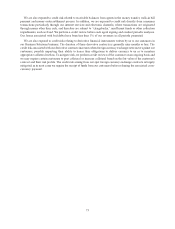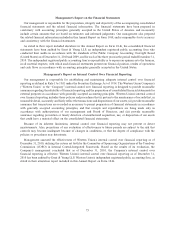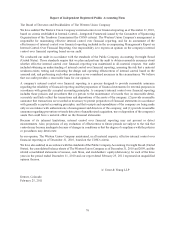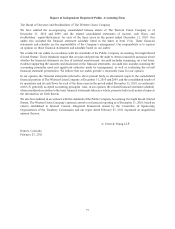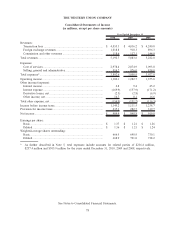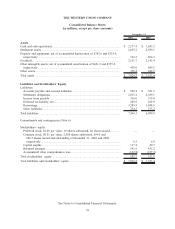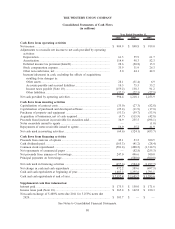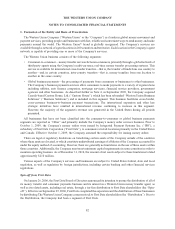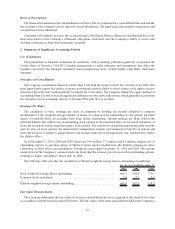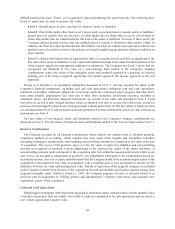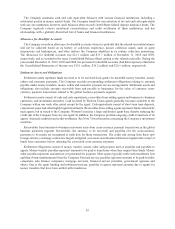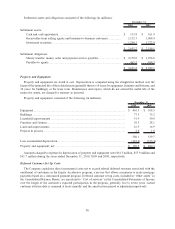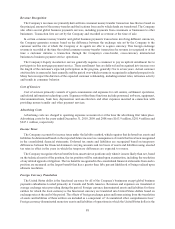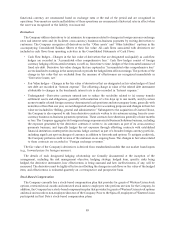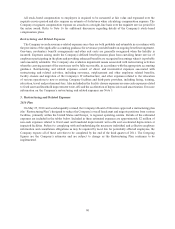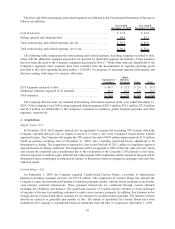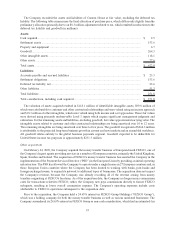Western Union 2010 Annual Report Download - page 85
Download and view the complete annual report
Please find page 85 of the 2010 Western Union annual report below. You can navigate through the pages in the report by either clicking on the pages listed below, or by using the keyword search tool below to find specific information within the annual report.
Basis of Presentation
The financial statements in this Annual Report on Form 10-K are presented on a consolidated basis and include
the accounts of the Company and its majority-owned subsidiaries. All significant intercompany transactions and
accounts have been eliminated.
Consistent with industry practice, the accompanying Consolidated Balance Sheets are unclassified due to the
short-term nature of the Company’s settlement obligations contrasted with the Company’s ability to invest cash
awaiting settlement in long-term investment securities.
2. Summary of Significant Accounting Policies
Use of Estimates
The preparation of financial statements in conformity with accounting principles generally accepted in the
United States of America (“GAAP”) requires management to make estimates and assumptions that affect the
amounts reported in the financial statements and accompanying notes. Actual results could differ from these
estimates.
Principles of Consolidation
The Company consolidates financial results when it has both the power to direct the activities of an entity that
most significantly impact the entity’s economic performance and the ability to absorb losses or the right to receive
benefits of the entity that could potentially be significant to the entity. The Company utilizes the equity method of
accounting when it is able to exercise significant influence over the entity’s operations, which generally occurs when
the Company has an ownership interest of between 20% and 50% in an entity.
Earnings Per Share
The calculation of basic earnings per share is computed by dividing net income available to common
stockholders by the weighted-average number of shares of common stock outstanding for the period. Unvested
shares of restricted stock are excluded from basic shares outstanding. Diluted earnings per share reflects the
potential dilution that could occur if outstanding stock options at the presented dates are exercised and shares of
restricted stock have vested, using the treasury stock method. The treasury stock method assumes proceeds from the
exercise price of stock options, the unamortized compensation expense and assumed tax benefits of options and
restricted stock are available to acquire shares at an average market price throughout the year, and therefore, reduce
the dilutive effect.
As of December 31, 2010, 2009 and 2008, there were 34.0 million, 37.5 million and 8.0 million, respectively, of
outstanding options to purchase shares of Western Union stock excluded from the diluted earnings per share
calculation, as their effect was anti-dilutive. During the years ended December 31, 2010 and 2009, the average
market price of the Company’s common stock was lower than the exercise price for most of its outstanding options,
resulting in higher anti-dilutive shares than in 2008.
The following table provides the calculation of diluted weighted-average shares outstanding (in millions):
2010 2009 2008
For the Year Ended December 31,
Basic weighted-average shares outstanding ................................................... 666.5 698.9 730.1
Common stock equivalents .......................................................................... 2.4 2.1 8.1
Diluted weighted-average shares outstanding ................................................ 668.9 701.0 738.2
Fair Value Measurements
The Company determines the fair values of its assets and liabilities that are recognized or disclosed at fair value
in accordance with the hierarchy described below. The fair values of the assets and liabilities held in the Company’s
83


